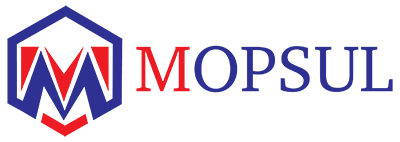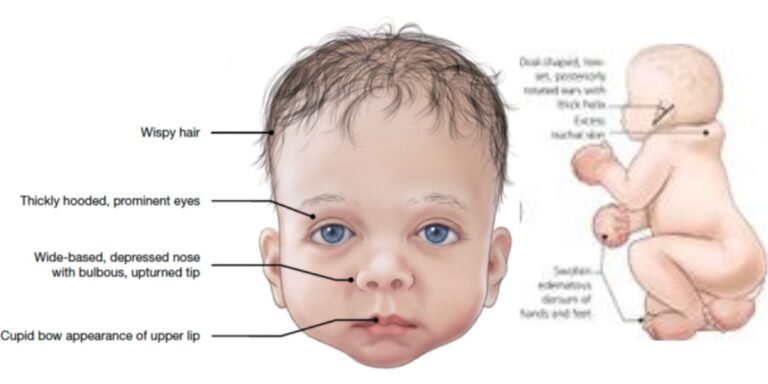Introduction: Understanding Noonan Syndrome
Noonan syndrome is a rare genetic condition that affects multiple parts of the body, often leading to distinctive facial features, heart defects, short stature, and developmental delays. Although its symptoms can vary widely, Noonan syndrome typically presents early in childhood and continues to influence health throughout life. Named after Dr. Jacqueline Noonan, who first described it in the 1960s, this condition has been the subject of extensive research because of its genetic and clinical complexity.
Noonan syndrome is part of a group of disorders known as RASopathies, caused by mutations in genes that affect the RAS/MAPK cell signaling pathway — a key regulator of cell growth, differentiation, and survival. This disruption leads to the various physical, cardiac, and developmental manifestations seen in individuals with Noonan syndrome.
What Is the Triad of Noonan Syndrome?
The classic triad of Noonan syndrome includes three hallmark features:
- Distinctive Facial Appearance
Individuals often have a recognizable facial structure characterized by wide-set, downward-slanting eyes, low-set ears, a short or webbed neck, and a broad forehead. These features may become more subtle with age but are often noticeable during infancy and childhood. - Short Stature
While infants with Noonan syndrome are typically born with a normal birth weight and length, their growth slows over time, leading to a shorter-than-average adult height. Growth hormone therapy may sometimes be used to improve final height outcomes. - Congenital Heart Defects
Heart problems are among the most common and serious aspects of Noonan syndrome. The most frequent defect is pulmonary valve stenosis, followed by hypertrophic cardiomyopathy (HCM), which can affect how efficiently the heart pumps blood.
Together, these three features — facial differences, short stature, and heart defects — form the classical triad of Noonan syndrome.
What Are the Signs of Noonan Syndrome?
Noonan syndrome presents with a wide range of physical, developmental, and medical characteristics. Not all affected individuals have the same features or severity, but common signs include:
1. Facial Features
- Wide-set, down-slanting eyes
- Droopy eyelids (ptosis)
- Low-set, backward-rotated ears
- A broad or webbed neck
- A small lower jaw (micrognathia)
- A flat nasal bridge and a short, broad nose
- High-arched palate and dental crowding
These features may be more pronounced in childhood and tend to become subtler in adulthood.
2. Growth and Development
- Short stature is one of the most consistent features.
- Feeding problems during infancy are common due to poor muscle tone or gastrointestinal issues.
- Some children may experience delayed milestones, such as sitting, walking, or talking later than peers.
- Mild learning difficulties or developmental delays may occur, though most individuals have a normal intelligence quotient (IQ).
3. Heart Defects
Heart conditions occur in 50–80% of people with Noonan syndrome. Common ones include:
- Pulmonary valve stenosis – Narrowing of the valve between the heart and lungs.
- Hypertrophic cardiomyopathy (HCM) – Thickening of the heart muscle, which can affect heart function.
- Atrial septal defect (ASD) – A hole in the wall between the upper heart chambers.
- Coarctation of the aorta – Narrowing of the main artery carrying blood from the heart.
4. Skeletal and Muscular Features
- Broad chest with widely spaced nipples
- Pectus excavatum (sunken chest) or pectus carinatum (protruding chest)
- Scoliosis or joint hypermobility
- Webbed or short neck
5. Bleeding and Bruising
- Easy bruising and prolonged bleeding are common.
- Caused by platelet dysfunction or deficiencies in blood clotting factors.
- May cause excessive bleeding during surgeries or dental work.
6. Reproductive and Hormonal Issues
- Males: Undescended testicles (cryptorchidism) is common and may affect fertility later in life.
- Females: Generally normal fertility, though puberty may be delayed.
7. Other Health Problems
- Lymphatic abnormalities – Swelling of hands, feet, or neck due to fluid accumulation.
- Kidney defects – Usually mild but may include structural irregularities.
- Hearing loss – Often due to recurrent ear infections or nerve damage.
- Eye problems – Strabismus (crossed eyes) or refractive errors requiring glasses.
Causes and Genetics of Noonan Syndrome
Noonan syndrome is a genetic disorder, meaning it results from changes (mutations) in specific genes that play roles in cell growth and development.
Key Genes Involved
The most common genes associated with Noonan syndrome include:
- PTPN11 (accounts for about 50% of cases)
- SOS1
- RAF1
- KRAS
- NRAS
- RIT1
These genes are part of the RAS/MAPK signaling pathway, which controls how cells grow, divide, and communicate. Mutations disrupt normal signaling, leading to the developmental abnormalities seen in Noonan syndrome.
Inheritance Pattern
- Autosomal Dominant: Only one copy of the mutated gene is enough to cause the disorder.
- A parent with Noonan syndrome has a 50% chance of passing the condition to their child.
- In about half of all cases, the mutation occurs spontaneously (de novo), meaning there’s no prior family history.
Diagnosis of Noonan Syndrome
Diagnosis is based on a combination of clinical evaluation, physical features, heart tests, and genetic testing.
1. Clinical Examination
A physician looks for distinctive facial features, growth patterns, and signs of congenital heart disease.
2. Genetic Testing
Modern genetic testing techniques, such as next-generation sequencing (NGS), can identify mutations in the RAS/MAPK pathway genes with high accuracy.
3. Imaging and Laboratory Tests
- Echocardiogram and electrocardiogram (ECG) to detect heart defects.
- Blood clotting tests to evaluate bleeding risk.
- Ultrasound to assess kidney and lymphatic abnormalities.
Early diagnosis is crucial to manage symptoms and prevent complications effectively.
Management and Treatment of Noonan Syndrome
There is currently no cure for Noonan syndrome, but treatments focus on managing specific symptoms and improving quality of life.
1. Cardiac Care
- Regular monitoring by a cardiologist is essential.
- Surgical intervention may be necessary for severe pulmonary valve stenosis or hypertrophic cardiomyopathy.
2. Growth and Development
- Growth hormone therapy can help some children reach a more typical height.
- Nutritional support and feeding therapy for infants with feeding difficulties.
3. Learning and Behavioral Support
- Early intervention programs for speech, occupational, and physical therapy.
- Educational support for children with learning challenges.
4. Bleeding Disorders
- Regular blood tests to evaluate clotting ability.
- Avoiding certain medications that increase bleeding risk (e.g., aspirin).
- Caution during surgical or dental procedures.
5. Reproductive Health
- Hormone therapy may be needed for delayed puberty.
- Surgical correction for undescended testicles in males.
6. Emotional and Social Support
- Psychological counseling may help individuals and families cope with the emotional challenges of living with a chronic genetic condition.
- Support groups and genetic counseling are valuable for families planning future pregnancies.
What Is the Life Expectancy of People with Noonan Syndrome?
Life expectancy for people with Noonan syndrome varies depending on the severity of associated heart defects and overall health.
- Many individuals live normal or near-normal lifespans, especially with proper medical care and monitoring.
- Severe hypertrophic cardiomyopathy or significant congenital heart defects may increase the risk of complications.
- With advances in cardiac surgery, early diagnosis, and genetic testing, outcomes have improved dramatically in recent decades.
Overall, most individuals with Noonan syndrome can lead active, fulfilling lives, particularly when heart and developmental issues are managed effectively.
What Is the Difference Between Turner Syndrome and Noonan Syndrome?
Although Turner syndrome and Noonan syndrome share some physical similarities — such as short stature and a webbed neck — they are distinct conditions.
| Feature | Noonan Syndrome | Turner Syndrome |
|---|---|---|
| Genetic Cause | Mutations in RAS/MAPK pathway genes | Missing or incomplete X chromosome |
| Sex Affected | Affects both males and females | Affects only females |
| Heart Defects | Pulmonary valve stenosis, HCM | Coarctation of the aorta, bicuspid aortic valve |
| Facial Features | Wide-set eyes, low-set ears, webbed neck | Similar neck webbing, but different facial proportions |
| Reproductive Issues | Males: cryptorchidism; females usually fertile | Infertility common in females |
| Growth | Short stature but variable | Consistently short stature |
| Intelligence | Usually normal | Usually normal but may have learning differences |
In summary, Noonan syndrome can occur in either sex and is caused by gene mutations affecting cellular signaling, while Turner syndrome is a chromosomal disorder affecting only females.
Noonan Syndrome in Infants and Adults
Infants
- Feeding difficulties due to weak muscles or poor coordination.
- Low muscle tone (hypotonia).
- Delayed developmental milestones.
- Congenital heart defects often detected early.
Adults
- Short stature and mild facial differences persist.
- Continued risk of heart complications.
- Fertility issues in males.
- Potential for bleeding problems or lymphatic swelling.
- Adults may require lifelong cardiac and hematologic monitoring.
Famous People with Noonan Syndrome
While many individuals with Noonan syndrome prefer privacy, a few have publicly shared their experiences to raise awareness.
Though not many celebrities have been officially confirmed, several public figures and online advocates have helped highlight the condition’s challenges and triumphs. Their openness has inspired others and encouraged early diagnosis and understanding of genetic disorders like Noonan syndrome.
Celebrities or public individuals sometimes misattributed to having Noonan syndrome (such as Ben Stiller, as speculated online) have not confirmed any medical diagnosis. However, awareness campaigns led by families and advocacy groups have made a major impact in educating the public about the condition.
Noonan Syndrome Radiology and Chromosome Findings
- Radiology: X-rays or MRI scans may reveal chest deformities, skeletal abnormalities, or signs of hypertrophic cardiomyopathy.
- Chromosome Findings: Unlike conditions like Turner syndrome, Noonan syndrome does not involve missing or extra chromosomes. Instead, it results from specific gene mutations that affect cellular signaling.
Living with Noonan Syndrome
Managing Noonan syndrome involves multidisciplinary care—including cardiologists, endocrinologists, geneticists, and therapists.
Children often benefit from individualized educational programs, while adults should maintain regular follow-ups for heart and hormone health. With modern healthcare and supportive therapies, people with Noonan syndrome can attend school, pursue careers, form families, and live meaningful lives.
Conclusion
Noonan syndrome is a complex but manageable genetic condition. It affects various body systems — from the heart to growth and facial features — yet early detection and consistent care can make a tremendous difference. With advancements in genetics and personalized medicine, individuals with Noonan syndrome today have greater opportunities than ever before to thrive.
While challenges such as heart defects or developmental delays may arise, a proactive medical approach and supportive environment help ensure a good quality of life. Understanding the condition’s genetics, symptoms, and management is key — not only for families affected but also for the broader community striving for awareness and acceptance.


